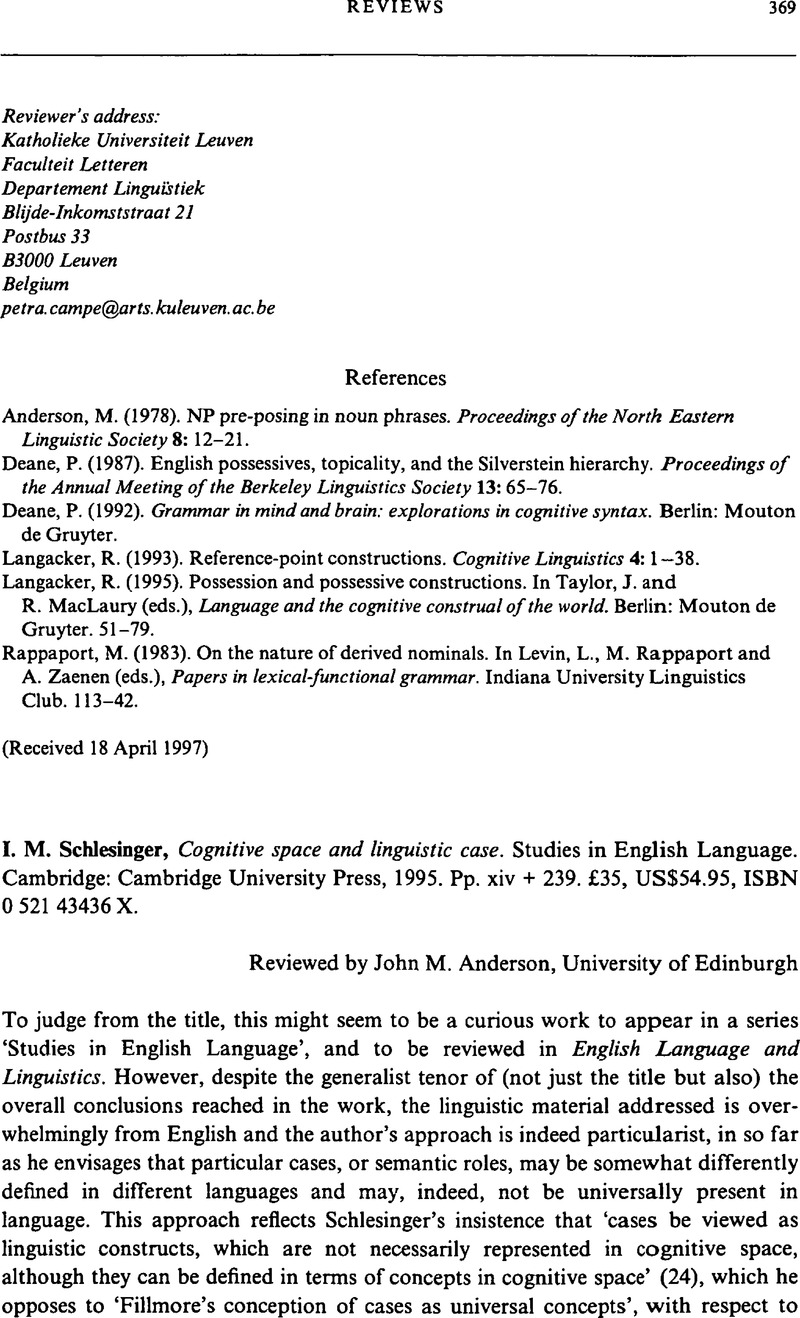No CrossRef data available.
Article contents
I. M. Schlesinger, Cognitive space and linguistic case. Studies in English Language. Cambridge: Cambridge University Press, 1995. Pp. xiv + 239. £35, US$54.95, ISBN 0 521 43436 X.
Published online by Cambridge University Press: 12 September 2008
Abstract
An abstract is not available for this content so a preview has been provided. Please use the Get access link above for information on how to access this content.

- Type
- Reviews
- Information
- Copyright
- Copyright © Cambridge University Press 1997
References
Anderson, J. M. (1977). On case grammar: prolegomena to a theory of grammatical relations. London: Croom Helm.Google Scholar
Anderson, J. M. (1994). Case grammar. In Asher, R. E. (ed.), Encyclopedia of language and linguistics. Aberdeen: Aberdeen University Press. 453–64.Google Scholar
Anderson, S. R. (1988). Objects (direct and not-so-direct) in English and elsewhere. In Duncan-Rose, C. & Vennemann, T. (eds.), On language: Rhetorica Phonologica Syntactica. A festschrift for Robert P. Stockwell from his friends and colleagues. London & New York: Routledge. 287–314.Google Scholar
Fillmore, C. J. (1968). The case for case. In Bach, E. & Harms, R. T. (eds.), Universals in linguistic theory. New York: Holt, Rinehart & Winston. 1–88.Google Scholar
Horn, L. R. (1980). Affixation and the unaccusative hypothesis. Chicago Linguistic Society 16: 134–46.Google Scholar
Moravcsik, E. A. (1978). On the distribution of ergative and accusative patterns. Lingua 45: 233–79.CrossRefGoogle Scholar
Plank, F. (ed.) (1984). Objects: towards a theory of grammatical relations. New York: Academic Press.Google Scholar
Somers, H. L. (1987). Valency and case in computational linguistics. Edinburgh: Edinburgh University Press.Google Scholar


